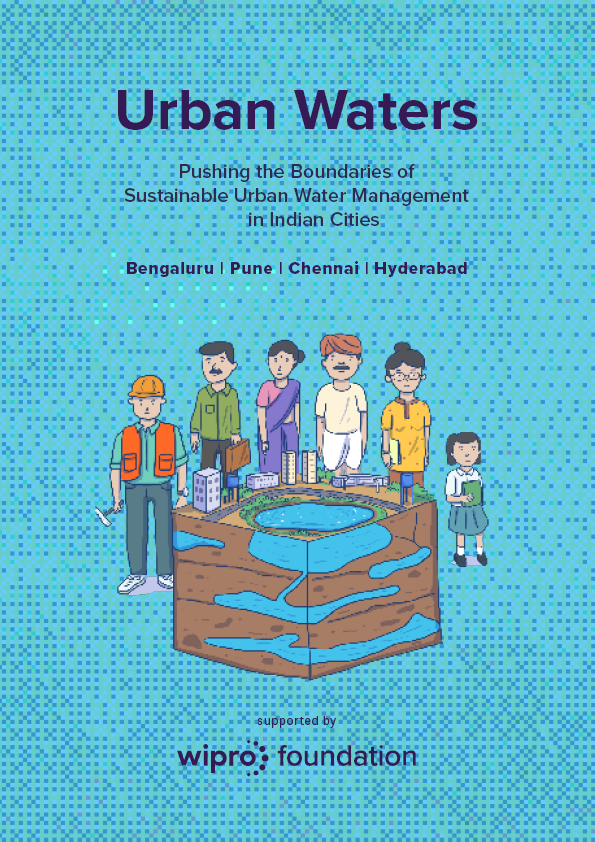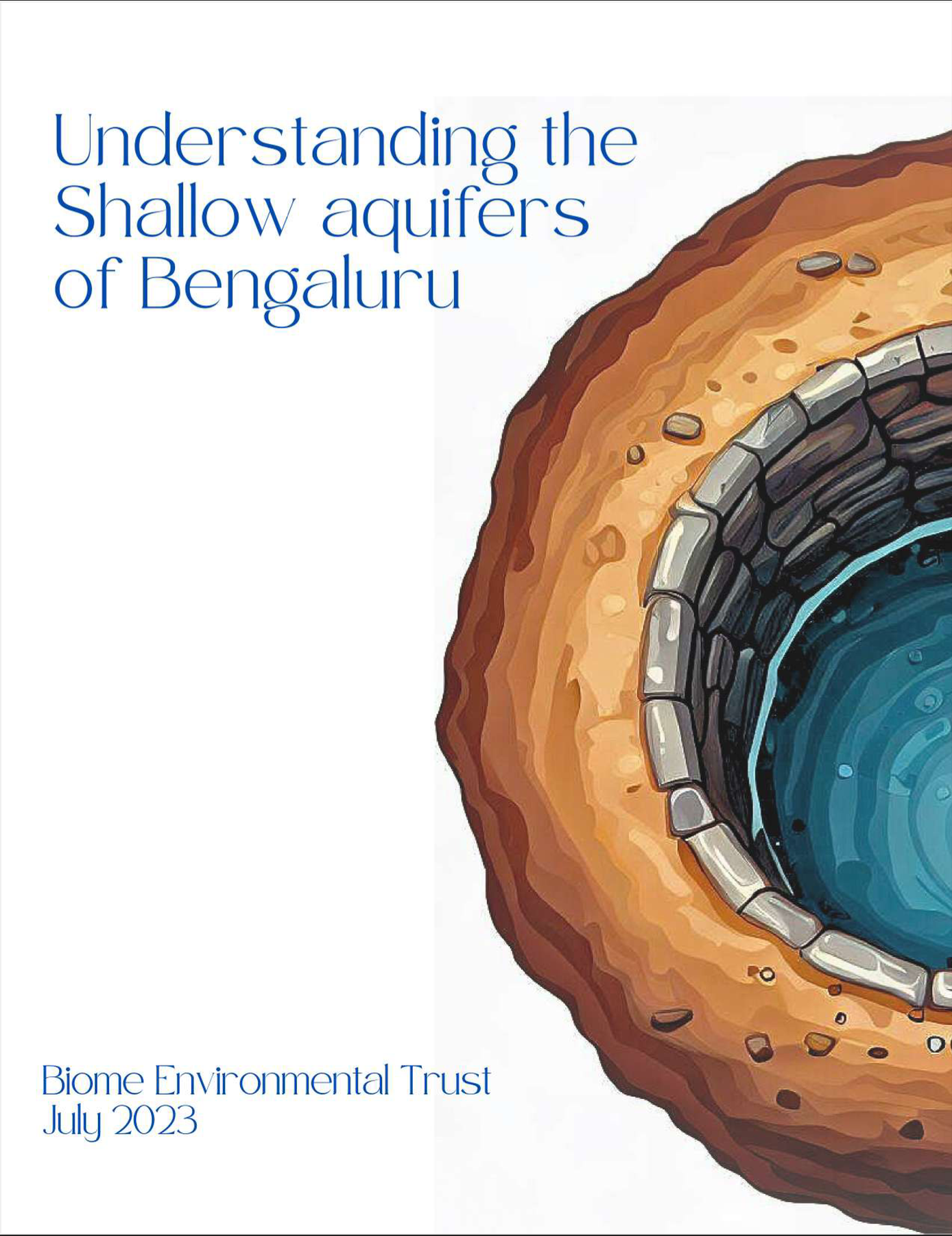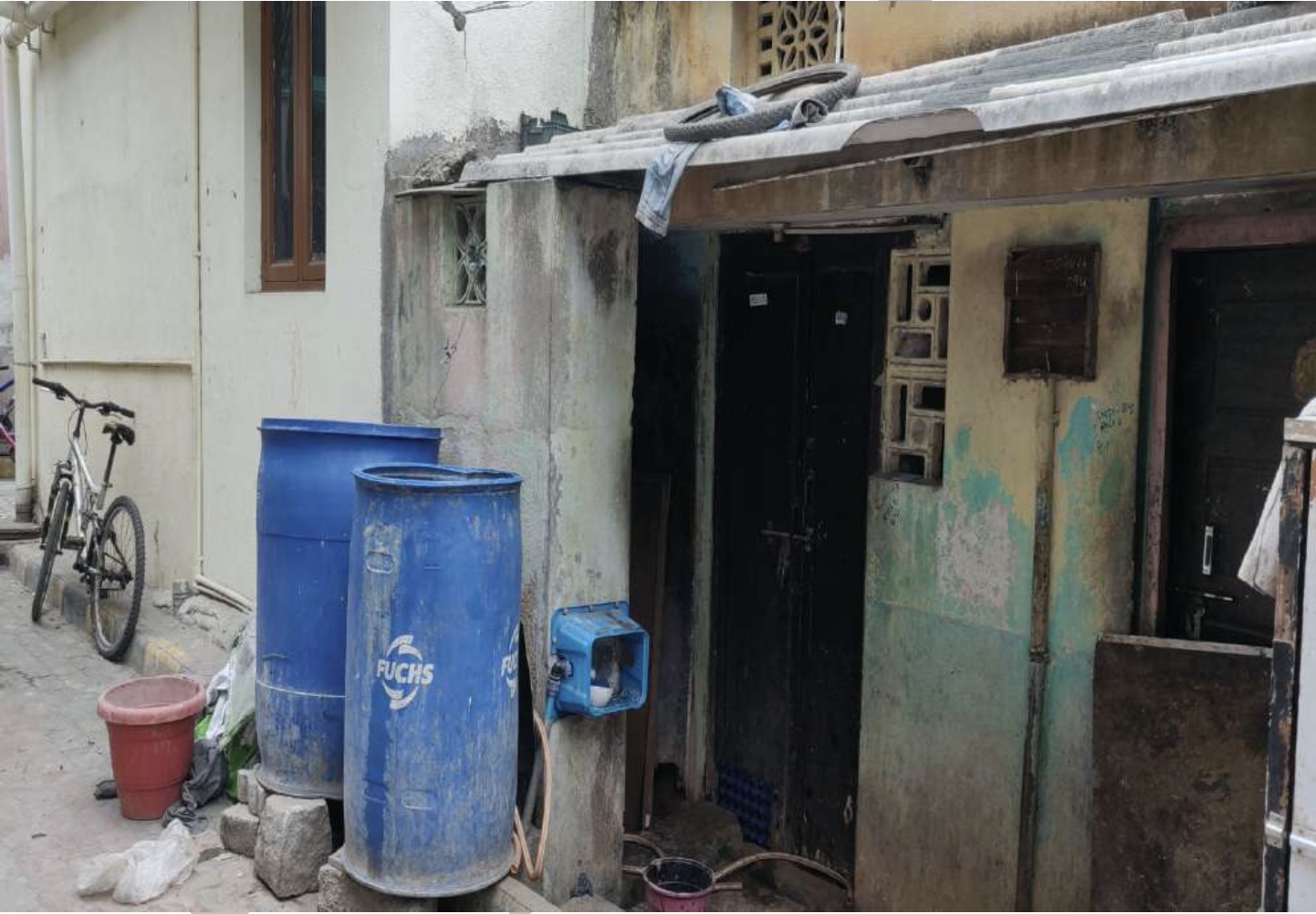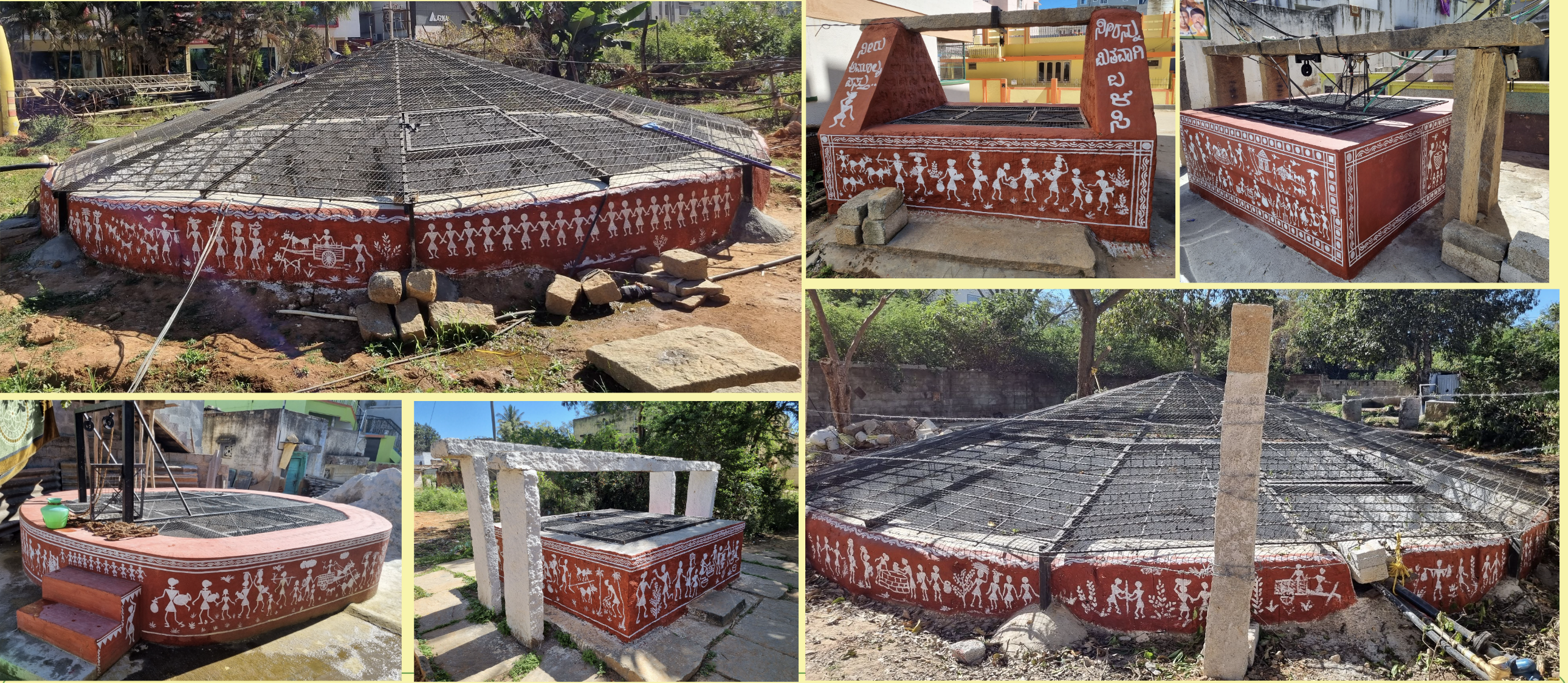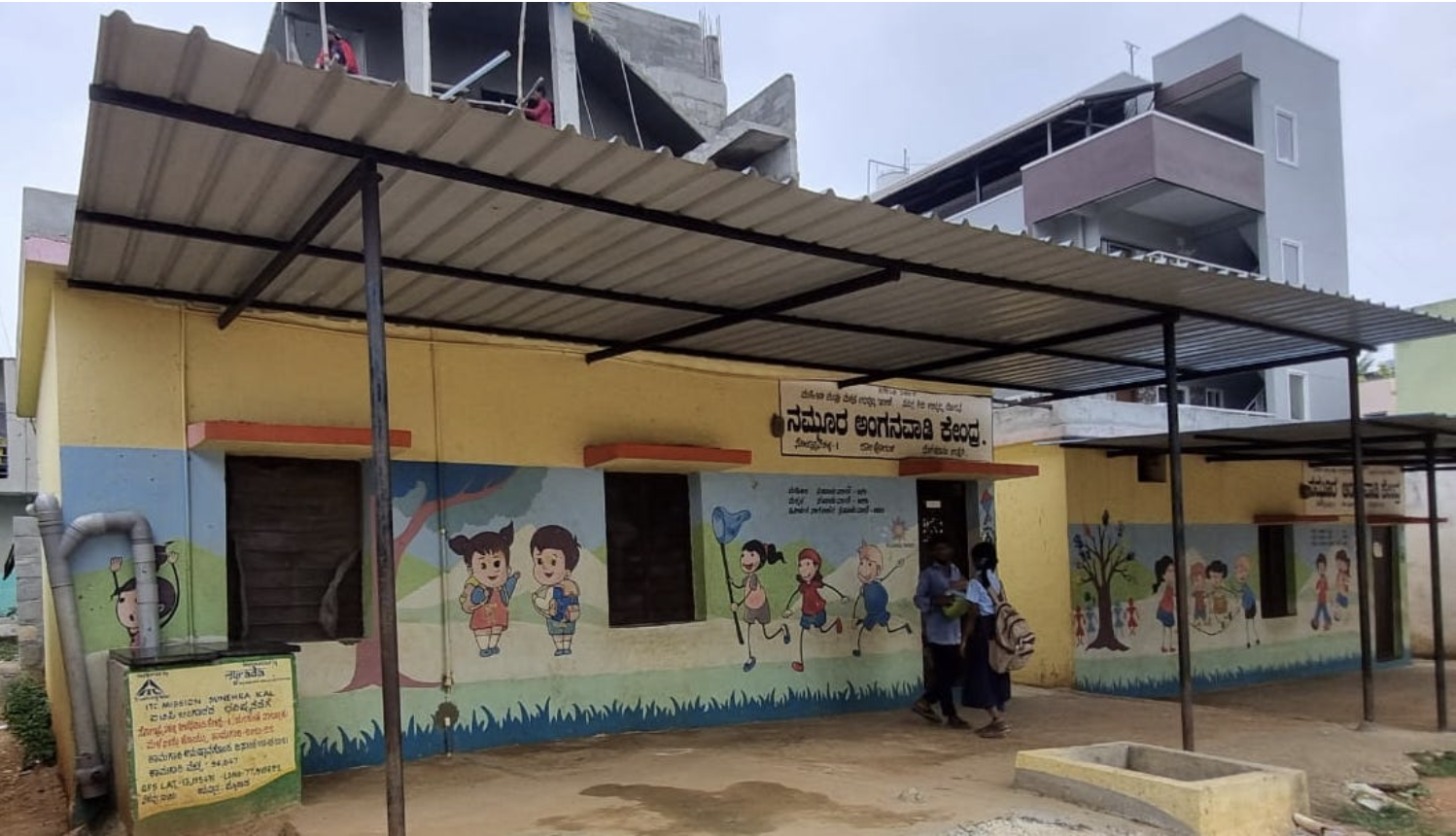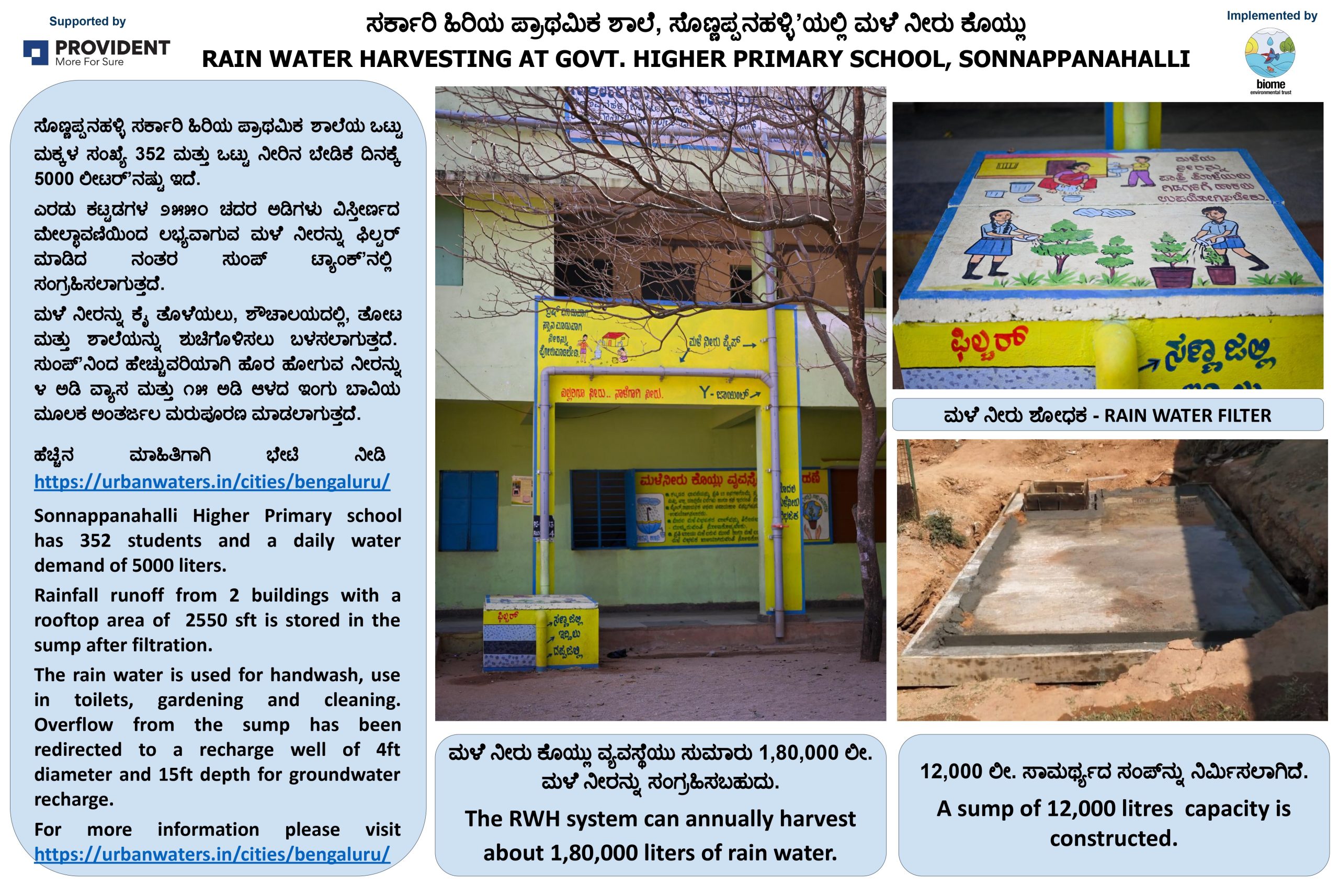Bengaluru Water Context
Bengaluru Water Context- Click here to see the Bengaluru Water Story in videos
Table of Contents
1. Introduction
The overall context of Bengaluru can be captured in a single word : Growth. Bengaluru, in the last two decades has grown economically, demographically and geographically. And this growth has been fast and unplanned. The implications of this growth for urban water management in Bengaluru are enormous. There has been institutional and policy responses to this growth – the formation of BBMP and greater Bengaluru coming under BWSSB’s jurisdiction and the recent passing of a law that mandates Rainwater harvesting for all land-uses above a certain size are two examples. However, Bengaluru’s growth has far outpaced water-infrastructure development. The relevant institutions and current policy regimes of Bengaluru’s water management are still grappling with the rate at which Bengaluru is growing, and its consequent increases both in demand for fresh water and generation of waste water. The phenomenal demographic growth and boom in real estate sector also means that more and more poor migrant labourers are a part of Bengaluru’s permanent or floating population. And therefore, despite its relative economic prosperity, the issue of access to water & sanitation for the poor is an integral part of the growth challenge.
While the formal mechanisms of managing water are grappling with these challenges, people have evolved coping strategies and urban water, waste-water & sanitation markets have stepped in to fill the gap left by the traditional institutions’ inadequacies. The role of lakes in the urban-scape has undergone major transitions. Surface waters in and in close proximity to Bengaluru have become dry or more polluted, and Bengaluru continues to go farther and farther to source its water. The coping strategies and markets have relied heavily on groundwater. While these market mechanisms provide valuable services, are they always ecologically sustainable? At the same time, some of Bengaluru’s citizens and private institutions have demonstrated sustainable practices and paths of self-regulation – perhaps a silver lining, a potential solution in the complex challenge of managing urban waters in a growing city.
Capturing the context of Bengaluru vis-à-vis water therefore has multiple dimensions – and this section attempts to do the same in all these dimensions.
2. Historical Context
Benjamin Lewis Rice, in the Mysore State Gazetteer of 1876 notes that in Bengaluru “there were 1,988 government tanks (of which 1324 were reported to be in good order), 400 Inam tanks, 16,725 wells and 354 canals”. Historically Bengaluru (like the rest of India) depended upon surface water sources like tanks, reservoirs and wells to meet its needs. “Ox-bow” tanks of the kind that are found all over South India were aplenty here also. Today these number about 55.
Bengaluru’s first water supply system was founded on the Hessarghatta tank about 24 km from the centre of the city. It was comprehensively redone, deepened and extended, in 1894 to become a store for the water needed for Bengaluru. For the first time the city had reached out for water beyond its tanks – Sampangi, Sankey, Ulsoor and Dharmambuddhi – and local wells to what was seen as a more reliable source – a river. Built on the river Arkavathy, this reservoir was the main source of water for Bengaluru from 1896 to 1935 during which time it supplied 36 million litres per day to the city.
As the city grew, another large tank – Thippagondanahalli was built in 1934 (also on the Arkavathy river) to supply 135 million litres of water every day to Bengaluru. However over time this also proved inadequate and eventually Bengaluru began to get its water from the Cauvery which today supplies 80% of the city’s water. It is interesting to note that even today, Thippagondanahalli accounts for close to 20% of Bengaluru’s water supply. Hessarghatta however has fallen into disuse and last filled up in 1994.
More on Bengaluru’s water history can be obtained here
3. Demographic and Landuse Context
The population of Bengaluru has registered a 46 % growth in the past decade from 6.5 million in 2001 to 9.5 million in 2011 while in the previous decade ie 1991 – 2001, the population grew by 35%. Further population density has gone up from 2,985 people per sq km in 2001 to 4,378 in 2011. Needless to say, such an increase in numbers has put enormous stress on Bengaluru’s resources and especially affected has been water. The mushrooming of housing complexes, apartments and business complexes all over the city and especially in peripheral areas like Whitefield and Sarjapur road has meant unprecedented groundwater extraction. A large number of these areas are not connected to the BWSSB supply lines and in trying to meet their demand have resorted to tankers and sinking borewells – in either case the source being groundwater. In the long run, it is the city’s aquifers that are getting depleted and the practice is essentially unsustainable.
Along with the increased population comes a change in the land use patterns. What was earlier primarily agricultural land now houses concrete buildings and roads. The overall result is lesser percolation of rainwater into the ground and aquifers. Further, there is an increased generation of waste water which brings its own challenges. While all apartments, gated communities and corporations are required to treat their waste water prior to discharging it into public drains, experience shows that the level of treatment is often shoddy and as such polluted wastewater finds its way into lakes and ponds which dot the landscape.
The positive side of the story is that a quite a few Resident Welfare Associations and Corporations are taking an initiative to better understand and regulate water use within their own campuses.
4. Ecological Context
The City of Bengaluru has a moderate climate and is blessed with rainfall for about 8 months in a year. Given its location on a ridge the valleys provide a natural system of drainage. Since the city is not close to any perennial river, ground water and surface water from lakes have been the reliable the sources of water. A weathered rock formation about 10ft below the ground ensures that the soil is able to hold and transmit water thus forming a shallow aquifer from which the wells can then withdraw water.
4.1. Bengaluru Topology
Bengaluru is located on a ridge and on the water shed of two principal river basins, Arkavathi (a tributary of the Cauvery river) to the west and South Pennar to the East. The topography is characterised by a series of well defined valleys which radiate from the ridge of ‘High Grounds’ in the city centre to the north of the city and fall in a gradual manner towards a wide belt of flat land extending beyond the limits of the metropolitan area to the South.
4.2. Bengaluru Rainfall
Bengaluru is blessed with a relatively well distributed rainfall and has a rainfall distribution which is bi-modal (two peak rainfall seasons in a year). It receives an average rainfall of 970mm annually across 60 rainy days. The Monthly distribution of rainfall is as given below:
| Month | Days | Quantity (mm) |
|---|---|---|
| Jan | 0.2 | 2.7 |
| Feb | 0.5 | 7.2 |
| Mar | 0.4 | 4.4 |
| Apr | 3.0 | 46.3 |
| May | 7.0 | 119.6 |
| Jun | 6.4 | 80.80 |
| Jul | 8.3 | 110.20 |
| Aug | 10.0 | 137.00 |
| Sep | 9.3 | 194.8 |
| Oct | 9.0 | 180.40 |
| Nov | 4.0 | 64.5 |
| Dec | 1.7 | 22.10 |
| Total | 59.8 | 970.00 |
4.3. Bengaluru Geology
Bengaluru is in the Deccan plateau and is primarily made up up granite and gneiss rock formations. The geology of Bengaluru indicates that the top 5ft to 10ft from ground level is made up of the top soil layer and any water in this region is mostly lost to evapotranspiration. 100ft and below from ground level are the hard rock layers. Most deep borewells in the city draw their water from aquifers that are present in this deep bed rock. Between 10ft to 100ft from the ground level is a weathered zone that acts as a spongy layer and allows for percolation of water. This accounts for the shallow aquifer in Bengaluru. The soil in this layer is able to hold as well as conduct water which results in water being available in shallow wells of about 20ft-30ft for domestic consumption. It has however been observed that the Sarjapura Road area (where the WIPRO campus is located) is a hard rock zone
4.4. Bengaluru Lakes
were no rivers close by. Most of the lakes and tanks are manmade for purposes of drinking water, irrigation and fishing.They also favorably influence the microclimate of the city. They were constructed in the Sixteenth century by damming the natural valley systems by constructing bunds. The lakes have also served to replenish ground water resources in the vicinity, which are tapped through wells for drinking water. The number of lakes in Bengaluru City have been on the decline.
5. Institutional Context
In Bengaluru, there are various bodies that are responsible for the management of water in its various forms.
- The sole authority responsible for the supply of water and management of sewage and sullage in the city of Bengaluru is the Bengaluru Water Supply and Sewerage Board (BWSSB).
- The BBMP (Bruhat Bengaluru Mahanagara Palika) is the corporation of Bengaluru and is responsible for the maintenance of storm water drains and management of flooding in the city. Lately it has also been assigned with the upkeep of about 190 lakes in the BBMP Area.
- The Lake Development Authority (LDA) is an autonomous regulatory, planning and policy body for Protection, and Integrated Development of Lakes that are not in the BBMPs purview.
- The Karnataka State Pollution Control Board (KSPCB) is the agency responsible for defining standards of quality for the release of wastewater.
- The Central Ground Water Board (CGWB) is the agency entrusted with the monitoring of the quality, quantity and availability of ground water.
- The KIADB (Karnataka Industrial Areas Development Board) is the body that is responsible for the setup and management of industrial areas in Bengaluru. It is responsible for the storm water drains and the supply of water within the KIADB areas. It enforces that industries that are setup in the premises cannot draw out ground water from privately owned borewells and must look to the KIADB for the supply of water.
While there are different institutions responsible for meeting specific needs around water it can be safely said that there is no single body that looks at water in its entirety and seeks to solve the water problems from a management perspective rather than from a supply perspective
6. Supply and Demand Context
Bengaluru’s daily water demand is calculated on the basis of 135 litres per capita per day (lpcd). Going by this and also including industrial and other uses, Bengaluru requires close to 1500 million litres of fresh water every day (mld). The BWSSB supply is in the range of 810 mld which means that citizens often have to find other means of fulfilling their daily water requirement. Over the years, it is groundwater which has been meeting this water deficit either in the form of private borewells or tanker water. It is interesting to note that if one looked at the total rain falling on Bengaluru city and broke it down on a per-day basis, then this is of the order of 3000 million litres per day!
There are also questions over whether the estimated consumption of 135 litres per person per day is actually realistic? From our experience, we find that in a middle – class scenario, this is fairly accurate but the numbers can change rapidly as one moves towards the poorer sections of society (slums) or the richer classes (apartments and gated layouts). In one such study done by Biome Solutions for the Rainbow Drive Layout on Sarjapura road, it was found that the average water consumption was actually around 250 litres per person per day, largely on account of landscaping and car washing.
In the long run, demand management will have to be the paradigm adopted by Bengaluru’s citizenry. Cauvery (BWSSB) water is already struggling to reach different pockets of the city and there are cases where the water supply lines have been installed but there is no water to supply. Further with groundwater depleting by the day, it will not be too far when we might reach a flashpoint and find ourselves in a crisis. To some extent this is already happening, with the soaring rates being demanded by tanker operators and ever plummeting groundwater levels. Till 6 years back, one heard of average borewell depths of 300-400 ft but now it is more like 800 – 900 feet and on several occasions in excess of 1000 ft.
7. Economic Context
Water in Bengaluru is supplied from various sources, namely the BWSSB that essentially supplies Cauvery water, homes that have their own private shallow wells or private deep borewell and draw on ground water, tanker water that is brought in from boreholes around the city, bottled water and rainwater that is harvested as it falls on the rooftops.
The production costs associated with each of these includes energy costs for pumping from source to storage and then for supply. It includes large infrastructural costs for building of storages, digging borewells, installing of water treatment plants and sewage treatment plants. The ongoing maintenance costs include the chemicals required for running these plants as well as man power required to operate these system. All these contribute to the cost of water. A detailed analysis on the Production Cost of water in a layout indicated that waste water treatment is actually one of the largest component of this cost which often goes unnoticed.
A simple analysis comparing actual costs for these various sources of water considering both capital and maintenance costs reveals that rainwater is actually the cheapest source of water and tanker water that is brought in from remote locations the most expensive at about Rs 60/- per KL. The costs for BWSSB supplied water is in the range of Rs 30/- to Rs 40/- per KL accounting for the various leakages and losses in the system. The BWSSB manages it costs for water by levying an increasing block tariff of water. Ground water from shallow and deep wells is slightly more economical at Rs 6/- and Rs 16/- per KL respectively.
It is also interesting to note that while the affluent and middle class is able to get water at about 6 paise per liter (from either BWSSB, tankers or ground water), the poor often end up paying about Rs 8/- per bucket of water which work out to about 20 paise per liter
8. Legislative and Regulatory Context
9. Knowledge Context
Given the various aspects around water (from the source to the sink) in Bengaluru and perhaps the entire world it is seen that there are various players that contribute towards the knowledge base of the water sector.
There are voluntary and funded organizations that work in the policy, advocacy and research space like,
- CIVIC (Citizen Voluntary Initiatives for the City) that is working towards developing a pro-poor policy on water in the city and is also trying to bring in transparency and accountability in the water sector through the RTI,
- Arghyam a public charitable foundation working in the water and sanitation sector in India ,
- KSCST (Karnataka State Council for Science and Technology) which runs a Rainwater Harvesting Cell that provides information, training and help for the implementation of RWH in the City,
- BWSSB RWH Cell that has setup the Rainwater Park in Jayanagar and provides training to plumbers as well as information to students and citizens of Bengaluru
- IndiawaterPortal is an open , inclusive, web-based platform for sharing water management knowledge
Given the need for services around the management of water there are also service providers for
- Water treatment systems(which include technologies for – Reverse Osmosis, Softeners) ,
- Honeysuckers (private sewage tankers operators that empty out sewage from soak pits and septic tanks),
- Sewage Treatment Plant systems (For treatment of sewage using technologies of Aerobic/Anaerobic systems and Microfiltration) ,
- Borewell Diggers (That provide the technology and implementation for digging of deep bores and appropriate pumping mechanisms),
- Tankers operators (supply water in tankers to various points in the City),
- Pump manufacturers (for pumping of water from borewells, sewage tankers, STPs, UGR) ,
- Camera Inspection and Hydrofracturing (Study the health of the borewell by lowering a camera into the borewell, also provide services to flush out the borewell),
- Rainwater Harvesting (implementation of RWH ),
- Water Testing Labs ( testing of potable water as well as treated sewage water).
Each of these groups play a very hands on role in the water management of the City and between all amass a vast volume of information. While the issues around water are normally seen as those of availability and supply, given the amount of knowledge in private space it can also been seen as an issue of management.
Surrounding Water Context
Most of the apartment complexes on Sarjapur Road and Bellandur junction area depend on bore-well water. But since these wells go dry, the residents and the management of the complexes turn to private water suppliers.The Outer Ring Road is dotted with huge high-rises but these apartments are not covered by the BWSSB yet.
While the BWSSB had assured to give water way back in 2004, the promise has not materialised till date. As the terrain is quite rocky, the residents in these apartments have not had much success with drilling borewells. How could the city’s urban planning and development authority (Bengaluru Development Authority – BDA) give clearance to these huge apartments without any surety of water supply, is the question that lingers in the minds of the residents in the Sarjapur – Bellandur area.
The BDA though on its part, does refer to a linkage between the layout sanctioning process and the water supply planning. Only after the BWSSB gives an assurance of water supply, will the BDA give clearance to buildings. Many other clearance certificates have to be got for high rises and apartments. However, the BDA is not empowered to follow up and enforce sanctioning of water and electricity except asking for the NOC from other agencies like the BWSSB, BESCOM, etc. before giving the approvals.
But according to the BWSSB, this ‘No Objection Certificate’ (NOC) does not entail an assurance of immediate water supply provision. Rather, the NOC merely signifies that the said site is in the zone of BWSSB plans and that water will eventually be provided in that region too, since the BWSSB is bound to provide water to BBMP (Bruhat Bengaluru Mahanagara Palike) areas. The question of when is not addressed by anyone. The NOC does not imply that provision of water, within a certain time frame or otherwise, is enforceable by law.
The apartments in Sarjapur road are not connected to the BWSSB sewerage system as well, thereby forcing apartments to have their own soak pits or sewage treatment plants.
Most of the private tanker operators extract water from borewells and due to the huge demand in this area, there has been indiscriminate drilling of borewells. The tanker operators charge anywhere between Rs. 450 and Rs. 600 for one load (6000 litres) of water supply. Also, following the law of economics, increase in demand is matched by a huge spurt in prices. There is no law to restrict private water tanker supply business. At most the BBMP health officials can take action against them if they supply unhygienic water.
Surrounding Lake System Overview
The two major lakes present near Wipro are the Saul kere and the Kaikondrahalli kere.
Over the last two decades, much of the landscape around the lakes has been covered by impervious surfaces and most of the connecting canals encroached upon. Instead of rainwater, sewage and effluents fill the lakes, changing them from seasonal to perennial ecosystems and drastically altering their biodiversity. In low-rainfall years, the lakes are dry and choked with sewage; in high-rainfall years they overflow into blocked canals causing floods in the city.
There has also been a change in lake management and administration, from lakes managed by village communities living in their vicinity to formal governance structures imposed by city municipal authorities. This abruptly disengaged and alienated local communities whose lives were intertwined with the lake for generations.
In recent years there have been efforts to implement the public-private-partnership approach to lake management. The attempt to enclose and privatise common spaces was an extremely controversial one and was met with widespread resistance from civil society, environmentalists and activist groups, resulting in several public interest litigations that halted the move. The Bruhat Bengaluru Mahanagara Palike (BBMP) and the Bengaluru Development Authority have taken over management of most of the city’s lakes. One classic example of this initiative is the slow revival of the Kaikondrahalli kere.
The original inhabitants of villages around the lake and resident welfare associations from wealthier apartment complexes have worked with the BBMP to formulate a socially sustainable lake-restoration programme. The lake has been excellently restored, with clean water flowing in and over 1,000 trees planted. Around 37 bird species, including migrant birds, have been spotted at the lake.
Kaikondrahalli lake was restored using a socially inclusive model. Provision was made for local residents to wash cattle, and a play area and facilities are being planned in such a way that they can be used by visitors to the lake as well as schoolchildren at a nearby low-income government-aided school.
The restoration programme was an extremely challenging one, and though it took time to implement, it worked because of the dedication of a few talented and committed individuals. One of the biggest challenges in the urban context is getting diverse groups of people together, getting them to talk to and listen to each other, and working to solve common problems.


